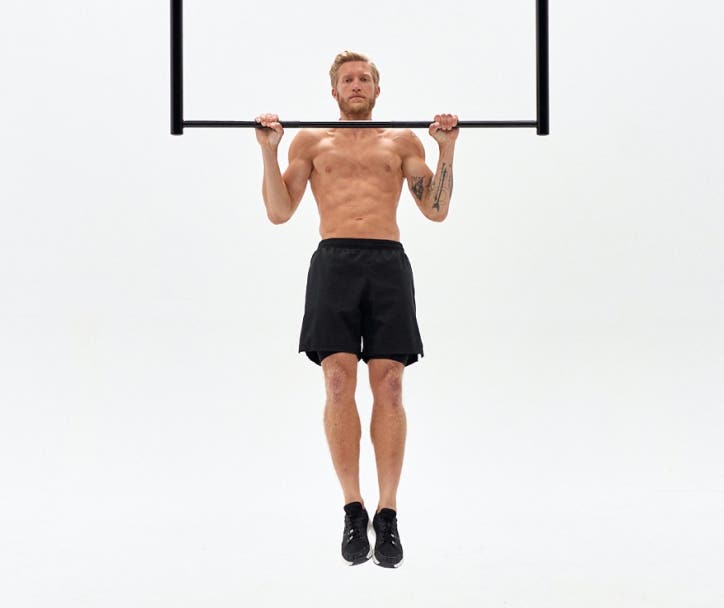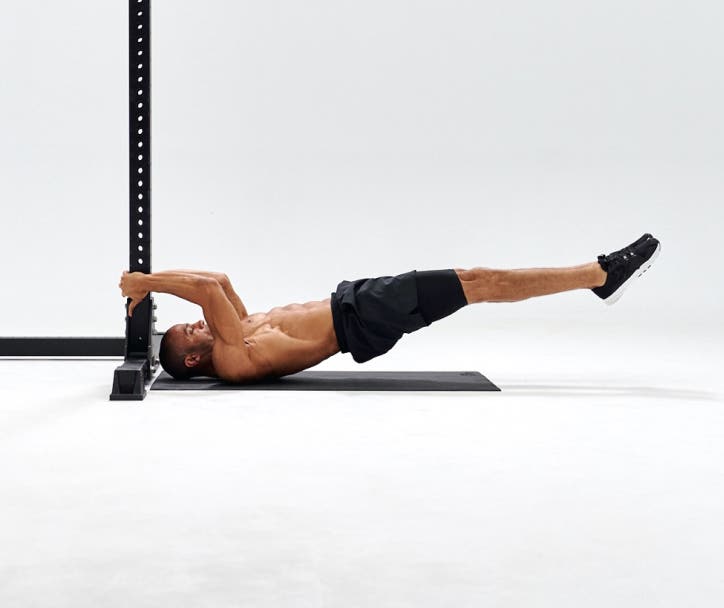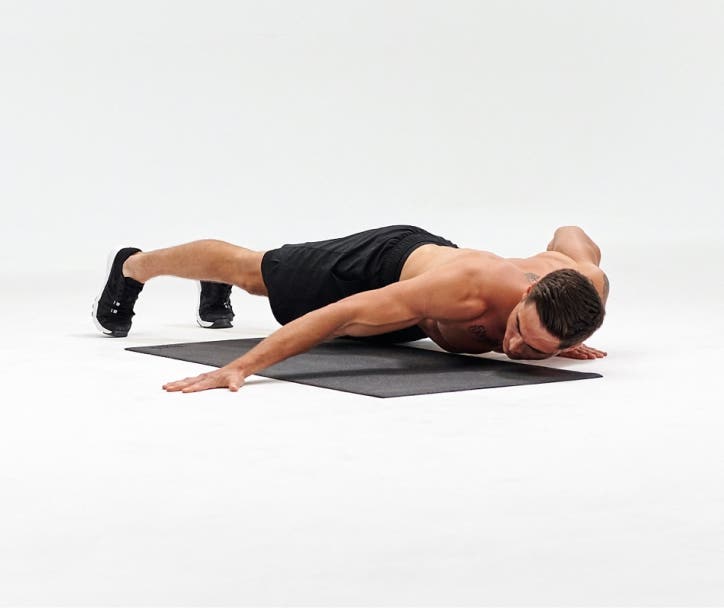Calisthenics may be all the hype right now, but what exactly is it? Derived from the Greek words “kallos” (beauty) and “sthenos” (strength), calisthenics refers to exercise that uses body weight as resistance.
It encompasses a variety of movements, including Pushups, Pullups, Squats, and Planks. And the best part about calisthenics besides requiring no equipment? You can do it anywhere — whether in a gym, park, or even at home (sound familiar?).
Calisthenics emphasizes natural movements, focusing on body control, coordination, and flexibility, making it an ideal choice for those seeking functional strength.
The history
Ancient Greeks used bodyweight exercises to build strength and agility, forming the cornerstone of their athletic training. Notably, calisthenics played a role in the training of warriors and athletes.
They performed movements that improved their combat skills and physical abilities. And the discipline continued to evolve over the centuries, influencing various fitness regimes and military training programs.
In the late 19th and early 20th centuries, calisthenics found a foothold in schools and physical education programs, emphasizing the importance of bodyweight movements for developing strength and coordination. This era also saw the establishment of fitness advocates who began to popularize structured resistance training routines.
As new fitness trends emerged in the latter half of the 20th century, calisthenics has remained a staple – often combined with other workout styles such as aerobics and gymnastics.

Are there different kinds of calisthenics?
Despite its popularity, calisthenics is often confused with other training modalities. Here’s a breakdown of how calisthenics stands apart from other forms of exercise:
Plyometrics vs. isometrics (dynamic vs. static)
While both can be integrated into a calisthenics routine, the key distinction lies in their purpose—plyometrics enhance explosiveness, while isometrics develop strength in a stationary position.
Plyometrics involves explosive movements, such as Squat Jumps and Clapping Pushups, designed to improve power and speed. These exercises often require quick transitions and can enhance athletic performance.
Isometrics focuses on static holds, like the planche or Handstand Hold, which build stability and strength endurance.
Calisthenics vs. HIIT
High-Intensity Interval Training (HIIT) is characterized by short bursts of intense exercise followed by rest or low-intensity periods. While calisthenics can be incorporated into HIIT routines, it can also be performed at a slower pace for strength and skill development.
Calisthenics emphasizes body control and strength, while HIIT focuses on cardiovascular endurance and calorie burning. Many find that combining both methods can provide great overall fitness benefits, improving both strength and cardiovascular health.
Calisthenics vs. weight training
Weight training typically uses external resistance, like barbells, dumbbells, or kettlebells, to build muscle mass and strength, allowing for nearly unlimited weight progression.
Calisthenics, on the other hand, uses body weight and emphasizes functional strength, endurance, and depending on the movement, a greater range of motion. It often engages stabilizing muscles not typically targeted by traditional weightlifting.

Freeletics x calisthenics
Calisthenics is also deeply rooted in the Freeletics brand. It’s fundamental to our “No Excuses” philosophy and underscores our commitment to providing fitness on your terms – anytime, anywhere.
While the technology has evolved from a series of .pdf workouts to a hyper-personalized AI-powered digital Coach, the calisthenics-based exercises remain. Why? Because bodyweight exercises are incredibly effective.
And the beauty of using only your body to regularly exercise lies not only in its effectiveness but also in its adaptability. Calisthenics can suit individuals at all fitness levels, whether you’re a complete beginner, older adult, or seasoned athlete looking to refine your skills.
Benefits of bodyweight movements
Calisthenics offers a myriad of benefits, making it an attractive choice for people at all fitness levels. Here are some of the key advantages:
1. Physical benefits
- Accessibility: Little to no equipment is required, allowing anyone to start immediately. All you need is your body and a little space.
- Scalability: Exercises can be modified for beginners or advanced athletes. For instance, an Incline Pushup is a great starting point, while a One-Handed Pushup presents a significant challenge.1
- Full-body workout: Many calisthenics exercises engage multiple muscle groups, promoting overall strength and coordination. Classic Freeletics movements like Burpees and Jumping Jacks activate your entire body, offering a comprehensive workout.
- Improved flexibility: Regular practice enhances mobility and flexibility, which is crucial for overall fitness and injury prevention. Movements such as Deep Squats and Lunges encourage a greater range of motion.
2. Mental benefits
- Boosted confidence: Mastering new skills (like a Handstand Hold or Muscleup) can significantly enhance self-esteem and motivation. The sense of achievement gained from progression can be incredibly rewarding.
- Mindfulness: Focusing on body control and movement fosters a connection between the mind and body. This connection promotes mental clarity and relaxation. Calisthenics encourages individuals to be present in their movements, reducing stress and anxiety.2
3. Cost-effective
- No gym fees: By using only your body, you can achieve your fitness goals without investing in expensive gym memberships or equipment. This affordability makes it accessible to a broader audience.
- Minimal investment: Even if you choose to purchase equipment, options like resistance bands or a Pullup bar are relatively inexpensive compared to traditional weight training gear.
4. Other benefits
- Improved posture: Many calisthenics movements target the core and back, which can lead to better posture over time. Improved posture can alleviate discomfort and enhance overall physical presence.
- Enhanced functional strength: The movements mimic daily activities, making everyday tasks easier and reducing the risk of injury. This functional strength is vital for maintaining independence as we age.
- Community and support: The rise of calisthenics has fostered many communities online and offline, where people share tips, motivate each other, and celebrate achievements. This sense of community can enhance accountability and enjoyment.

Exercises to get started
If you’re ready to reap the benefits of calisthenics, try mixing in a few basic exercises into your workout routine. Here are some fundamental movements to get you started:
- Pushups: A classic exercise that targets the chest, shoulders, and triceps. Start with standard Pushups, and as you progress, try variations like Archer Pushups or Sphinx Pushups.
- Squats: Excellent for leg strength and flexibility. Focus on form to ensure your knees and ankles reap all the benefits of the exercise.
- Planks: Build core strength and stability. Hold for as long as you can maintain proper form, and challenge yourself with variations like Side Planks or Plank Shoulder Taps.
- Pullups: Target your back and arms. If you’re unable to perform a full Pullup, use resistance bands or practice negative Pullups to build strength gradually. Try some of these variations, or even give our 30-Day Pullup Challenge a go!
Begin with 2-3 sets of each exercise, adjusting the repetitions according to your fitness level. As you progress, challenge yourself with more advanced variations or combinations.
Let’s recap
Calisthenics delivers benefits that go beyond the mere physical. It enhances your mental resilience, boosts self-confidence, and promotes a holistic approach to health.
Whether you're in a park, at home, or even traveling, calisthenics gives you the freedom to get creative with your workouts and adapt them to train wherever you are. It offers a truly unique skill set that complements any fitness journey and will become your “no excuses” companion on the road to long-term health.
Sources
[1] Gibbons, M. (2020). The Complete Guide to Calisthenics: A Functional Approach to Bodyweight Training. Fitness Press.
[2] Miller, A. (2022). Mindful movement: The mental health benefits of calisthenics. International Journal of Fitness Research, 10(2), 55-62.